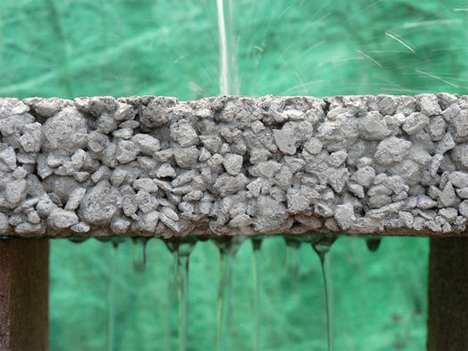
Parking lots are dirty places, and not only because of the used gum and empty soda cans all over. Typically, parking lot pavement collects large amounts of contaminants from cars: leaking oil and other fluids seep into the paving material. Then when a large amount of rain or snow falls on the parking lot, those contaminants can be washed into soil or a body of water. But if the EPA has their way, parking lots will be a little cleaner in the future. They recently started a decade-long study on parking lot paving materials that could filter rainwater, protecting nearby soil and underground drinking water supplies.

By making paving material porous, parking lot contaminants would sink into the pavement rather than flow off of it. The EPA has assembled a 43,000 square foot test parking lot to measure the effectiveness of three different types of porous paving materials. Beneath certain sections of the permeable material are collection pipes that will allow contaminated water to run off to a dedicated collection tank. EPA employees will be active participants by using the parking lot just like any other parking lot; their vehicles will contribute the normal leaky fluids and other everyday pollution. The Green Infrastructure Research Program is being conducted at the Edison, New Jersey EPA facility.

